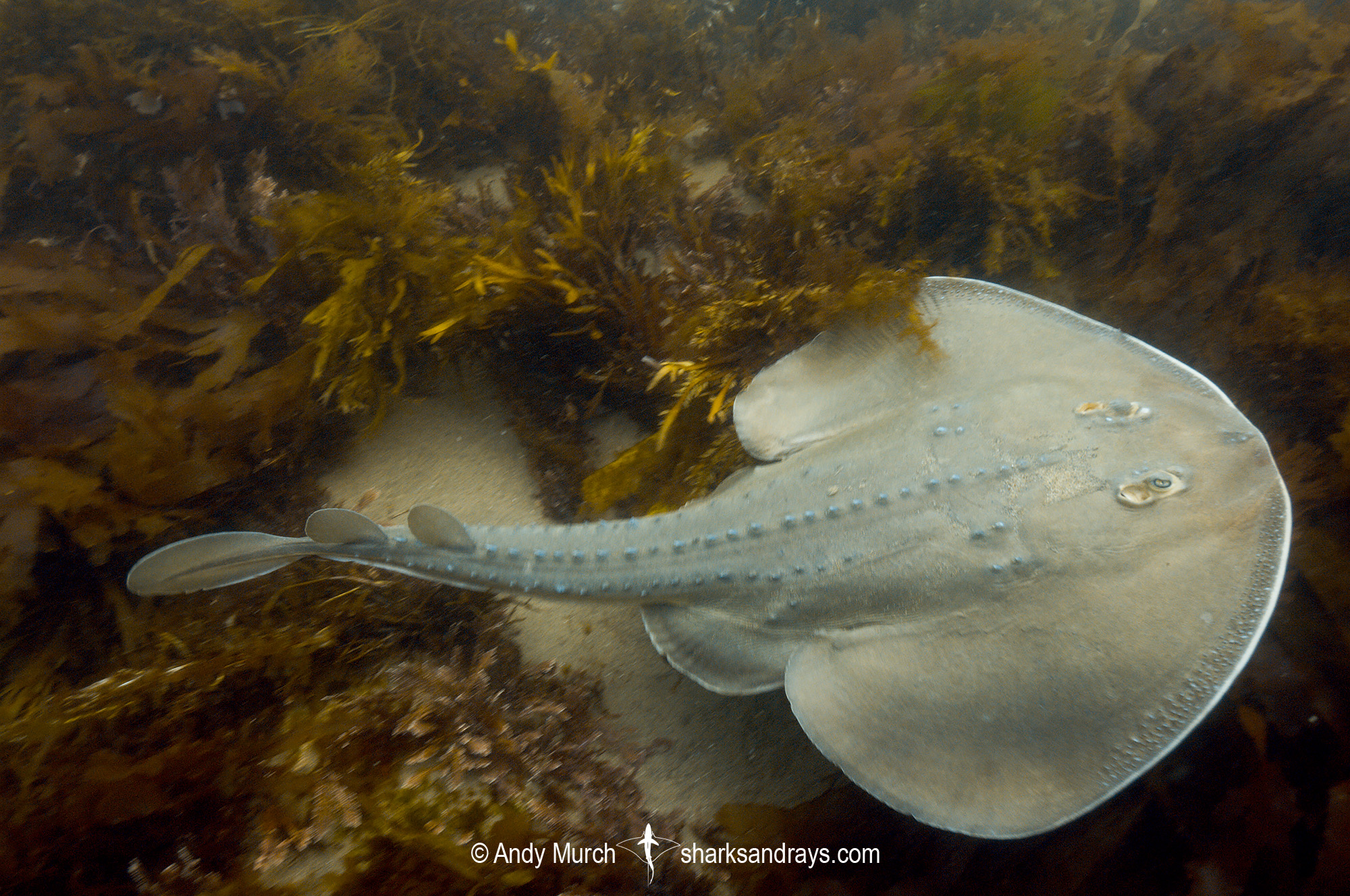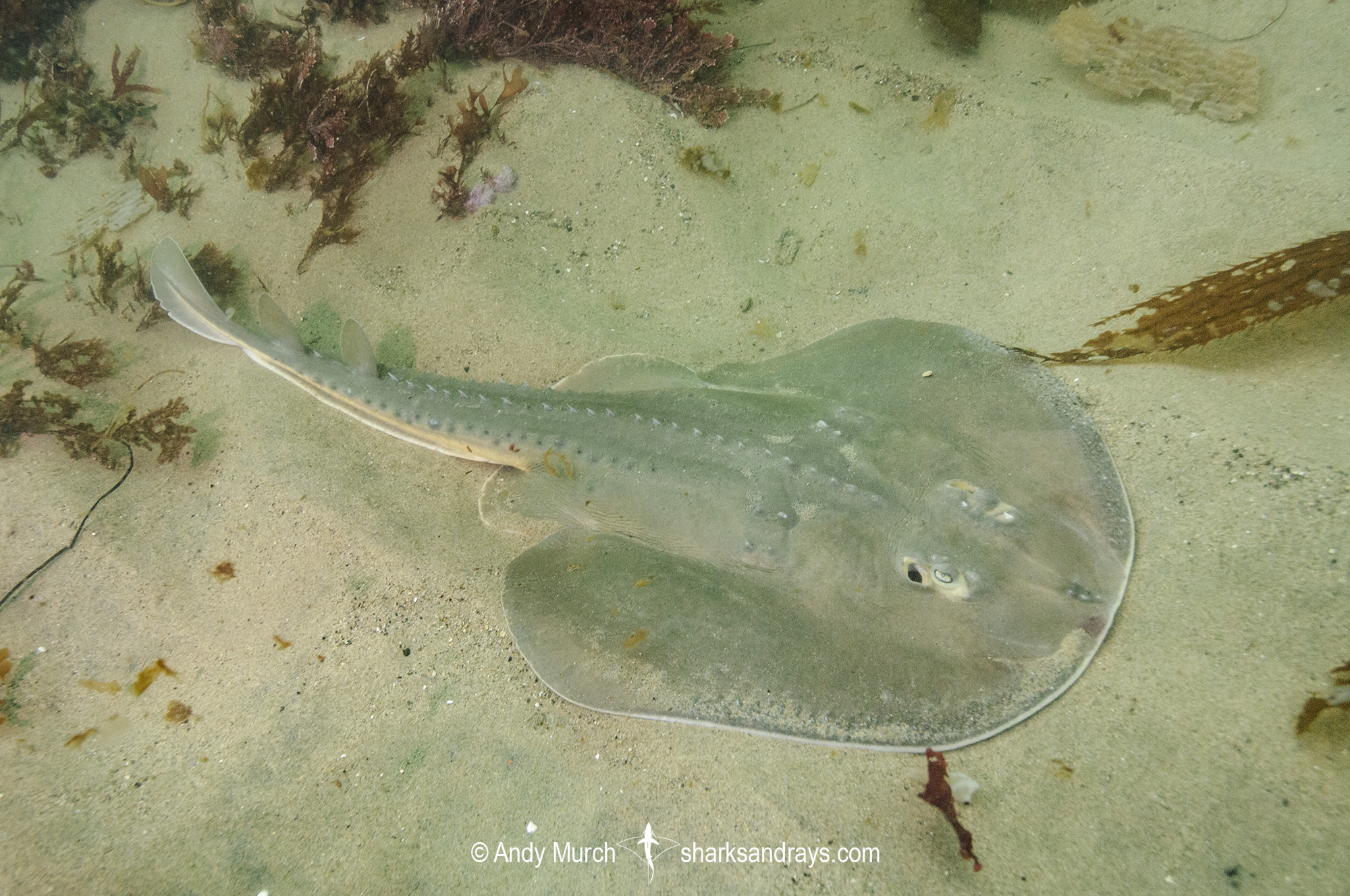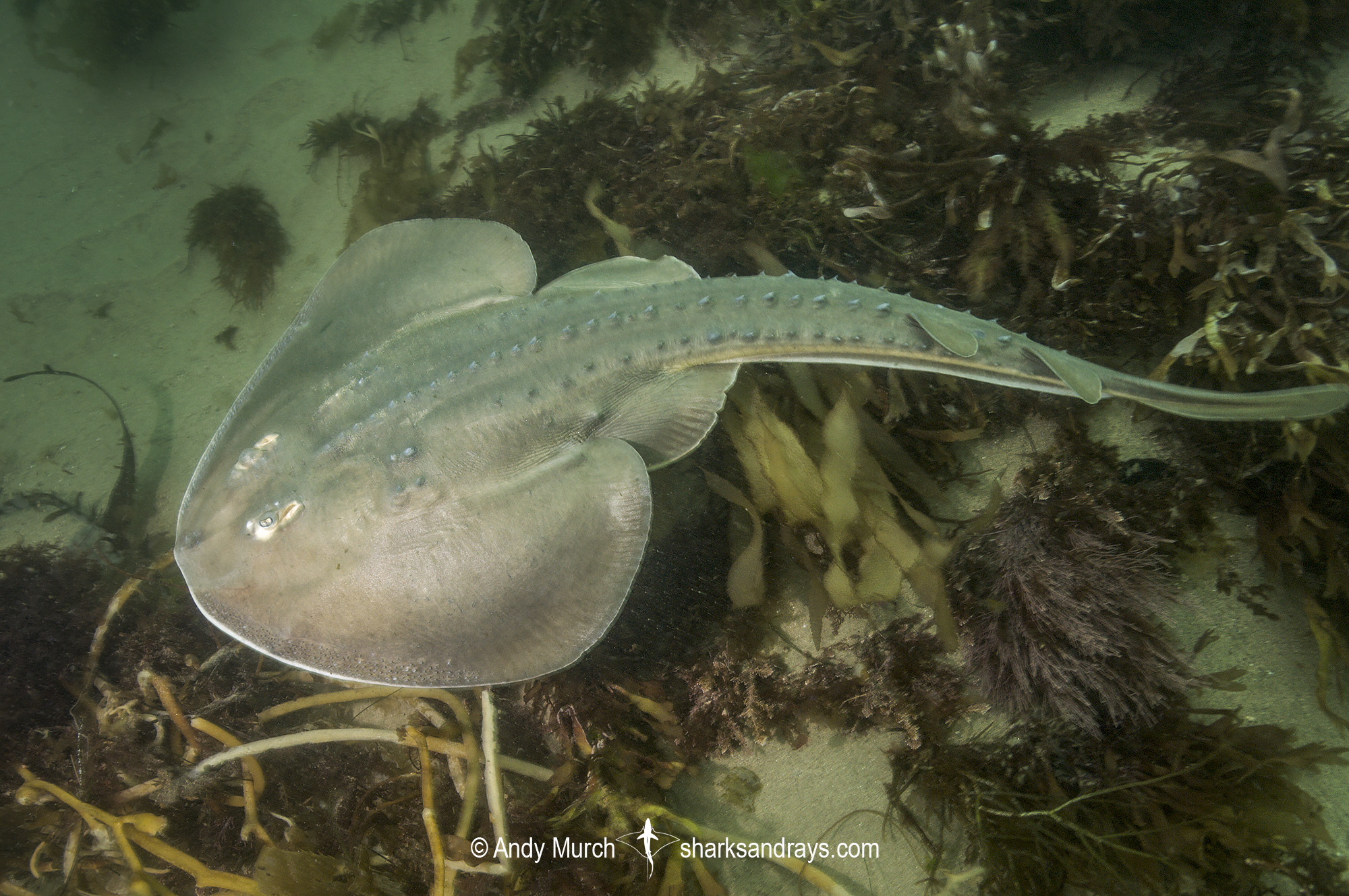Common name(s)
Thornback Ray, Thornback Fanray.
Identification
A large fanray with a reniform disc, a broadly rounded snout, and a broad torso. Pectoral fin apices broadly rounded. Pelvic fins long, low, with broadly rounded outer margins and acutely pointed free rear tips.
Eyes somewhat protruding. Nostrils thin, well separated, and positioned obliquely or almost horizontally. Nostrils separated from mouth by a fleshy ridge.
Three prominent, widely spaced rows of large thorns extend from nape (central row) and posterior disc (lateral rows) to first dorsal fin on tail. 1-2 pairs double thorns on inner and outer shoulders. Dense band of small thorns on anterior margins of pectoral fins, diminishing towards snout tip.
Tail long and broad; remaining wide but tapering gently to terminal lobe. Two high dorsal fins with rounded apices and convex posterior margins present on posterior tail. Caudal lobe large and spatulate. Caudal sting absent.
Colour
Dorsum greenish-grey to tan or brownish. Enlarged thorns often lighter. Ventrum white.
Size
Maximum length 91cm.
Habitat
Tropical to Warm-temperate seas. Demersal in shallow sandy or muddy bays, kelp forests, lagoons, sloughs, and estuaries. Usually shallower than 6m but recorded in 137m.
Distribution
Eastern Pacific. Found from Tomales Bay, California, to Bahía Magdalena. Isolated populations also occur in the Sea of Cortez, presumably with occasional crossover. Rare north of Monterey Bay but seasonally abundant in some northern lagoons such as Elkhorn Slough.
Conservation Status
LEAST CONCERN
The Thornback Ray is not targeted, but is known to be occasionally caught in commercial and recreational fisheries in United States (i.e., Monterey Fisherman’s Wharf and Elkhorn Slough, California, C. Pien, pers. obs., 3 February 2016) and in Mexican waters. There is little information available on catches in Mexico, but this species is likely to be taken by inshore fisheries in lagoons on the Baja Pacific coast and probably by shrimp trawls in the Gulf of California. Further information is urgently required given the species’ restricted range in Mexico.
Citation
Lawson, J., Carlisle, A.B. & Villavicencio-Garayzar, C.J. 2016. Platyrhinoidis triseriata. The IUCN Red List of Threatened Species 2016: e.T60112A80673588. https://dx.doi.org/10.2305/IUCN.UK.2016-2.RLTS.T60112A80673588.en. Downloaded on 14 March 2021.
Reproduction
Aplacental viviparous with yolk sac. Litter sizes 1-15 pups.
Diet
Diet consists mainly of small benthic invertebrates such as polychaete worms and crustaceans. Also predates on small bony fishes.
Behavior
Often solitary but congregates in shallow lagoons and sloughs in the summer to mate.
Reaction to divers
Usually nonchalant and easy to observe with nonthreatening movements.
Diving logistics
Although a common species in many bays in southern California, thornback rays are often found in turbid inshore water where photography is difficult. Try hunting in shallow bays just beyond the surf line for the best chance at sightings.
What’s new
View our full list of updates
Similar species
No other fanrays occur in the eastern Pacific.





